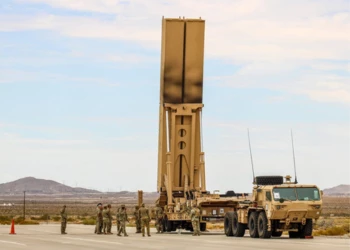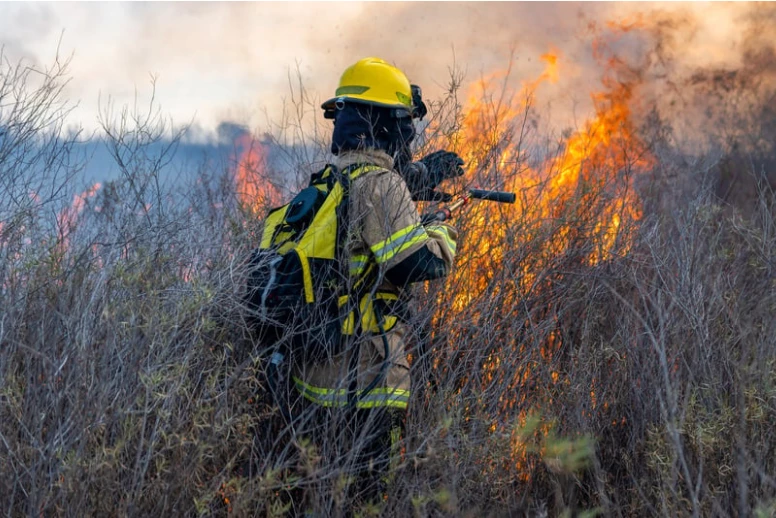Air Force Overhauls Aircraft Maintenance Training
New Tracks, VR Tools, and Retention Goals
Add bookmark
This March, Travis Air Force Base’s 60th Maintenance Operations Training Flight, in collaboration with Air Mobility Command and Mass Virtual, expanded its aircraft maintenance training capabilities by introducing virtual reality to its instructors and students.
The VR training proved helpful in overcoming a shortage of training aircrafts by allowing Airmen to practice critical maintenance tasks in a virtual environment. In total, the US Air Force (USAF) has established six VR models that cover essential procedures such as flight line hazards, and flight control systems.
The new technology highlights a critical yet unsung specialty within the Air Force, aircraft maintenance. The personnel who are responsible for aircraft maintenance are known as “2A” airmen. In total, there are 86,000 2A aircraft maintainers across the service, according to 2024 data.
While the ongoing pilot shortage has gained more national headlines as it impacts both commercial and defense aviation, there is also an ongoing aviation mechanic shortage as the profession faces an aging workforce. According to the Bureau of Labor Statistics, the aviation industry will need to fill 12,000 aircraft mechanic positions annually to keep pace with demand. However, the current output from maintenance training organizations falls short by 30%. For the USAF, a maintenance shortage can impact operational readiness across the air command.
This article will look at the latest efforts by the USAF to bring in more A2 airmen and the types of maintenance roles available in the Air Force.
To hear from USAF, NATO-allied air forces, and industry experts on the future of flight training, be sure to register for IDGA’s Military Flight Training Summit taking place this October 28-29 in San Antonio, Texas. The two-day summit will also include a panel discussion on advancing maintenance training across the USAF that includes Colonel Chris Dunston of the 49th Maintenance Group and Jay Hennette of HQ AETC A4M.
Maintenance Shortage Solutions
The same challenges the Air Force is facing in finding pilots are similar to the obstacles the air command has in enlisting and training maintenance workers. Those challenges include navigating an aging workforce and competition from the commercial industry, which is facing talent shortages of its own.
The federal government has looked towards the American education system in order to bring along the next generation of maintenance personnel. In March 2024 the Federal Aviation Administration (FAA) approved $13.5 million in grants to 32 U.S. educational institutions with the goal of addressing the aviation skills gap by encouraging more students to pursue careers as pilots and maintenance technician.
While the work with educational institutions is one step towards solving the maintenance shortage, the Air Force has yet to consider recycling some of the same programs it has implemented to retain pilots. For example, in 2023 the Air Force introduced an Aviation Retention Incentive. The incentive program ensures pilots can earn up to $600,000 over 12 years under the latest round of retention bonuses. The fiscal year 2024 incentive offered manned and unmanned pilots, combat systems operators, and air battle managers an extra $15,000 to $50,000 a year, depending on their assigned aircraft and committed years of service. However, a variation of the retention incentive is yet to be offered to aviation maintainers, even as they are being increasingly poached by the commercial industry.
Types of Maintenance Training
Another way the Air Force has made itself more accessible is by making the maintenance training experience more efficient. Last year there were over 50 aircraft maintenance Air Force Specialty Codes (AFSC). Following a January memo from the service branch, that list will be narrowed down to seven by 2027.
Those seven specialties include:
- General Maintenance Track – All junior enlisted Airmen will begin in this track and learn core tasks such as launching, recovering, and fueling aircraft across multiple airframes.
- Avionics and Electrical - Combines avionics systems with the electrical side of the Environmental and Electrical (E&E) specialty. Focuses on electronic systems, wiring, and electrical troubleshooting.
- Aerospace Ground Equipment (AGE) - One specialty that remains largely unchanged, this involves maintaining the equipment that supports aircraft on the ground, such as power units and air conditioning systems.
- Advanced Mechanical – Covering a wide range of mechanical systems, this specialty merges crew chiefs, fuels, hydraulics, and the flight line side of engine maintenance.
- Crew Support Systems - Focuses on life-support and cockpit-related systems, such as ejection seats.
- Fabrication - Integrates aircraft structural maintenance, aircraft metals technology, and nondestructive inspection. This specialty involves repairing and inspecting aircraft structures and materials.
- Intermediate-Level Engines – Specializes in more in-depth engine work beyond the flight line.
Once an A2 airman reaches the Technical Sergeant level, they can apply for a technical track to become a “nose-to-tail cross-functional expert” on a specific airframe. Alternatively, they can continue in their specialist track or move into a leadership track at the Master Sergeant level.
The goal of the reformed AFSCs is to improve maintenance training efficiency, allow assignment flexibility, and prepare the force for future operational environments and next-gen systems.
Do you have an idea for how the Air Force can retain maintainers and pilots? Let us know your thoughts in the comments below or by emailing us at info@idga.org.
























